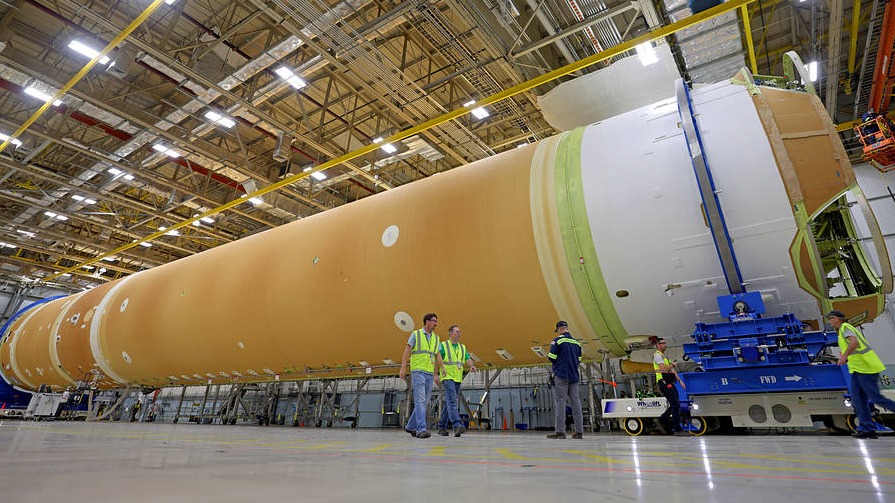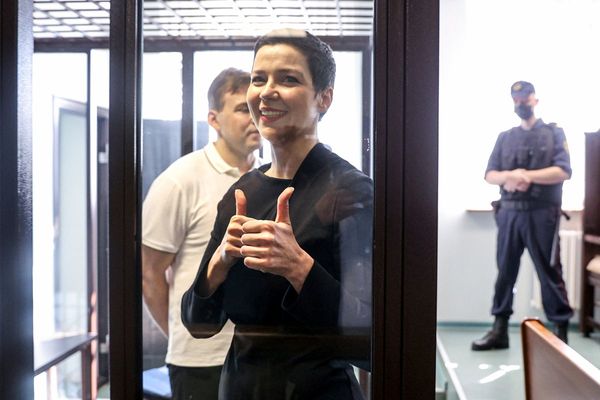
NASA just reached a big milestone in moon rocket assembly.
The agency's crewed Artemis 2 mission, which will launch to the moon as soon as 2024, will use a Space Launch System (SLS) rocket core stage that is nearly ready, an update from NASA officials indicated on Tuesday (March 21). The core stage is now fully assembled, aside from its four RS-25 engines, which will be popped on shortly.
In less than two weeks, on April 3, NASA will name the three Americans and single Canadian that will fly around the moon for the first crewed mission to Earth's nearest neighbor since Apollo 17 in 1972. Artemis 2 follows on from the successful Artemis 1, which sent an uncrewed Orion capsule to lunar orbit and back late last year.
Related: After Artemis 1, it will take NASA 2 years to send astronauts to the moon. Why so long?
SLS isn't quite as tall as the 363-foot (111 meter) Saturn V rocket that is most famous for launching six crewed Apollo missions to the lunar surface between 1969 and 1972, along with other missions that orbited or flew around the moon (among other tasks).
But standing at 322 feet (98 m), SLS dwarfs the 184-foot-tall (56 m) space shuttle that took astronauts to orbit for 30 years, between 1981 and 2011, and the two rockets that take astronauts to the International Space Station today: SpaceX's Falcon 9 (230 feet, or 70 m) and the Russian Soyuz (150 feet, or 46 m).
SpaceX's unflown Starship megarocket stands a shade taller, at around 395 feet (120 m) tall, and will be more powerful, featuring 17 million pounds (7.7 million kilograms) of thrust. But SLS is still quite powerful, generating about 8.8 million pounds (4 million kg) of thrust at liftoff.
SLS is certainly more than strong enough to send four people around the moon and to launch infrastructure toward Earth's nearest neighbor, which is what NASA is counting on.
The larger Artemis program aims to eventually establish a crewed outpost near the lunar south pole. The first astronauts are expected to touch down there in 2025 or thereabouts, on the Artemis 3 mission.
Supporting that work will be NASA's planned Gateway space station, which is how Canada secured its Artemis 2 seat; the Canadarm3 robotic arm will service the orbiting lunar complex in part using artificial intelligence.
Elizabeth Howell is the co-author of "Why Am I Taller?" (ECW Press, 2022; with Canadian astronaut Dave Williams), a book about space medicine. Follow her on Twitter @howellspace. Follow us on Twitter @Spacedotcom or Facebook.






